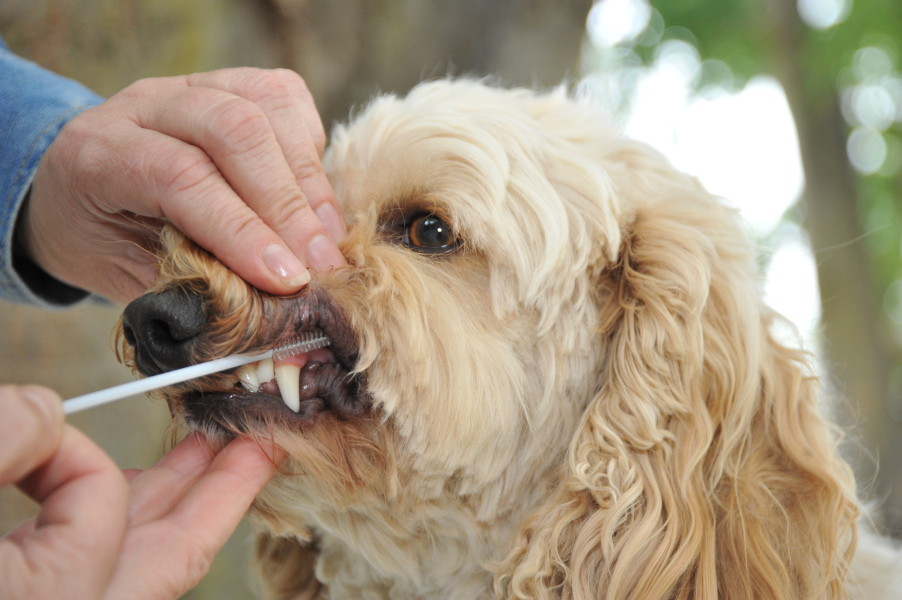Quick Summary
Click here for Price and Turnaround Time
Phenotype: Signs of neuroaxonal dystrophy are first apparent in young adults as uncoordinated movement (ataxia) and overstepping/high-stepping an intended location (hypermetria). Additional signs may include tremors and involuntary eye movements (nystagmus).
Mode of Inheritance: Autosomal recessive
Alleles: N = Normal, NADR = Neuroaxonal dystrophy
Breeds appropriate for testing: Rottweiler
Explanation of Results:
- Dogs with N/N genotype will not have this neuroaxonal dystrophy and cannot transmit this NAD variant to their offspring.
- Dogs with NADR/N genotype will not be affected by this neuroaxonal dystrophy, but are carriers. They will transmit this NAD variant to 50% of their offspring. Matings between two carriers are predicted to produce 25% neuroaxonal dystrophy-affected puppies.
- Dogs with NADR/NADR genotype will have neuroaxonal dystrophy, a degenerative neurological disease.
Results of this test can be submitted to the OFA (Orthopedic Foundation for Animals)
Rottweiler Health Panel
$130 per animal
Sample Collection
Dog DNA tests are carried out using cells brushed from your dog's cheeks and gums. The preferred cytology brushes are sent to you by mail, or you may provide your own brushes. For accepted alternative brushes, click here
We recommend waiting until puppies are at least three weeks old before testing.

Step-By-Step:
- Make sure the dog has not had anything to eat or drink for at least 1 hour prior to collecting sample.
- When swabbing puppies, isolate each puppy from the mother, littermates and any shared toys for 1 hour prior to swabbing. Puppies should not have nursed or eaten for 1 hour prior to collecting sample.
- If collecting samples from more than one dog, make sure to sample one dog at a time and wash your hands before swabbing another dog.
- Label brush sleeve with name or ID of dog to be sampled.
- Open brush sleeve by arrow and remove one brush by its handle.
- Place bristle head between the dog’s gums and cheek and press lightly on the outside of the cheek while rubbing or rotating the brush back and forth for 15 seconds.
- Wave the brush in the air for 20 seconds to air dry.
- Insert brush back into sleeve.
- Repeat steps 5 - 8 for each unused brush in sleeve on a fresh area of cheek and gums. Make sure to use and return all brushes sent by the VGL. In most cases, it will be 3 brushes per dog. If using interdental gum brushes, please note that the VGL requires 4 brushes per dog and only moderate or wide interdental gum brushes are accepted.
- Do not seal brushes in sleeve.
- Place all samples in an envelope and return to the address provided.
ATTENTION:
- Do not collect saliva/drool – the key to obtaining a good sample is getting cheek cells on the swab
- Do not rub swab on the dog’s tongue or teeth – this will result in poor quality sample
- Do not collect a sample from a puppy that has recently nursed – the mother’s genetic material can rub off on the puppy’s mouth and contaminate the sample
Neuroaxonal dystrophy (NAD) in Rottweiler dogs is a degenerative neurological disease. Signs are first apparent in young adults as uncoordinated movement (ataxia) and overstepping/high-stepping an intended location (hypermetria). Additional signs may include tremors and involuntary eye movements (nystagmus).
NAD in Rottweilers results from a mutation in VPS11 (c.2504A>G), reported here as NADR. The disease is inherited in an autosomal recessive fashion, which means that males and females are equally affected and that two copies of the defective gene are needed to cause NAD. Dogs with one normal and one affected gene (carriers) are normal and show no signs of the disease.
Testing for NAD in Rottweiler dogs assists clinicians with diagnosis of NAD and help breeders identify carriers among breeding stock to avoid producing affected dogs. Matings between carriers are expected to produce 25% of affected puppies.
